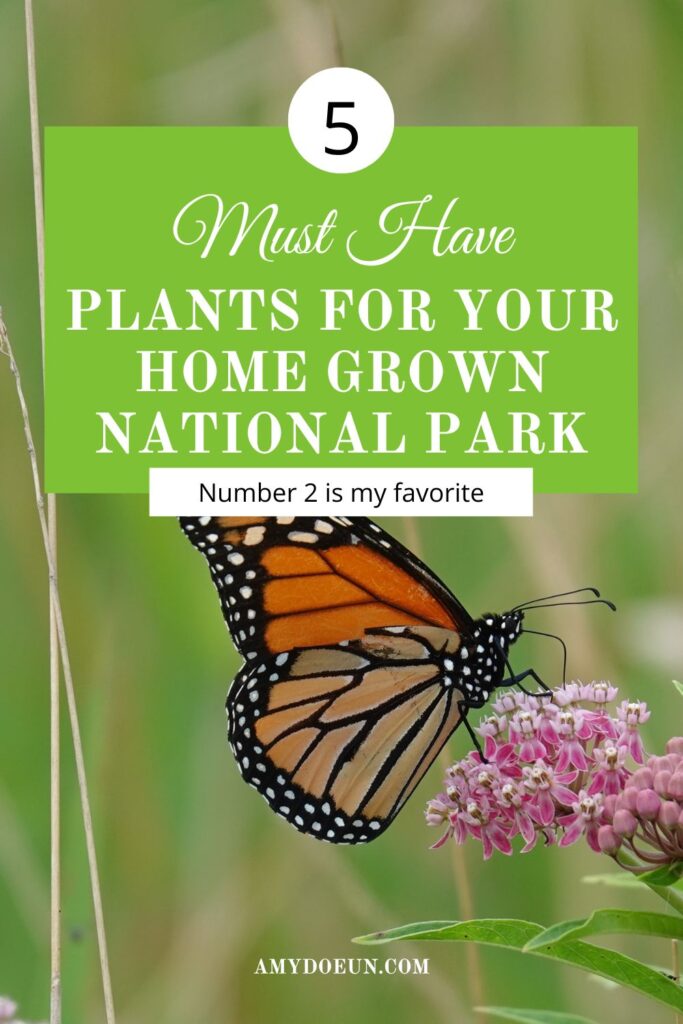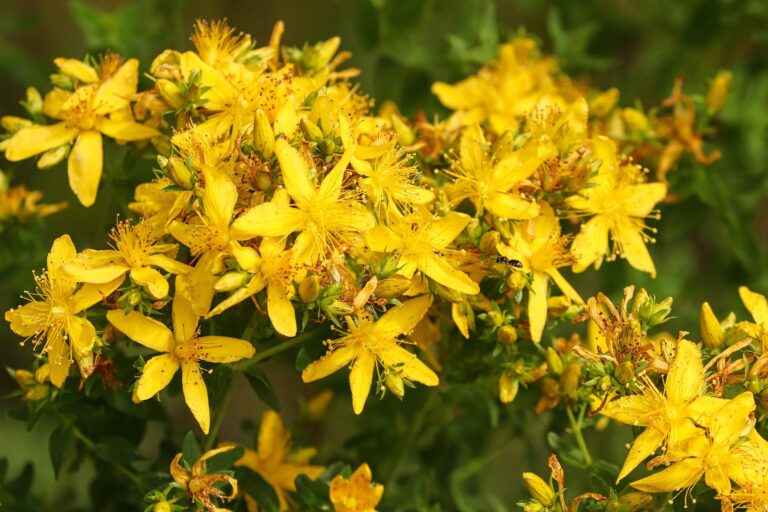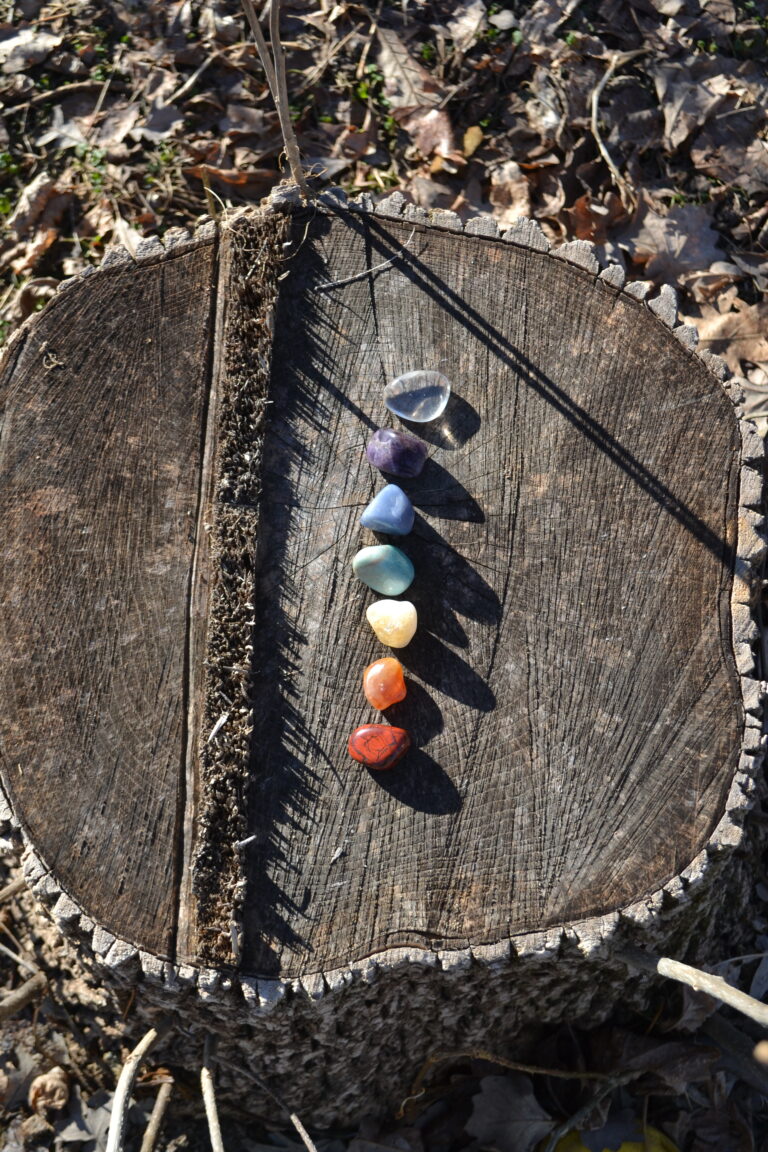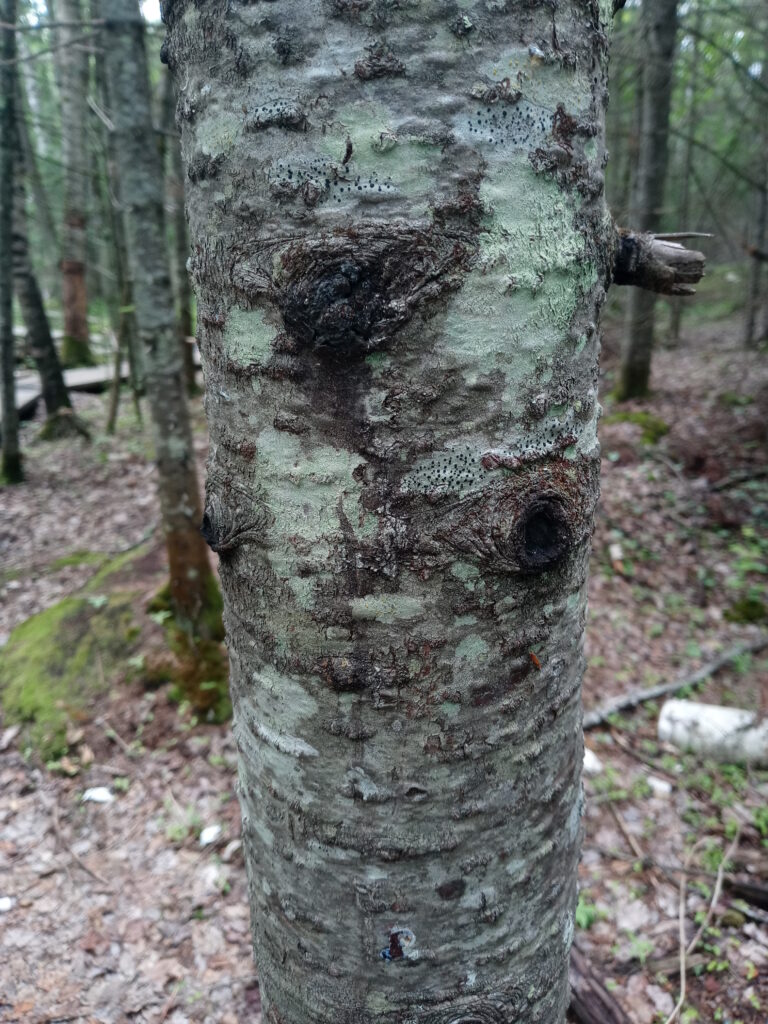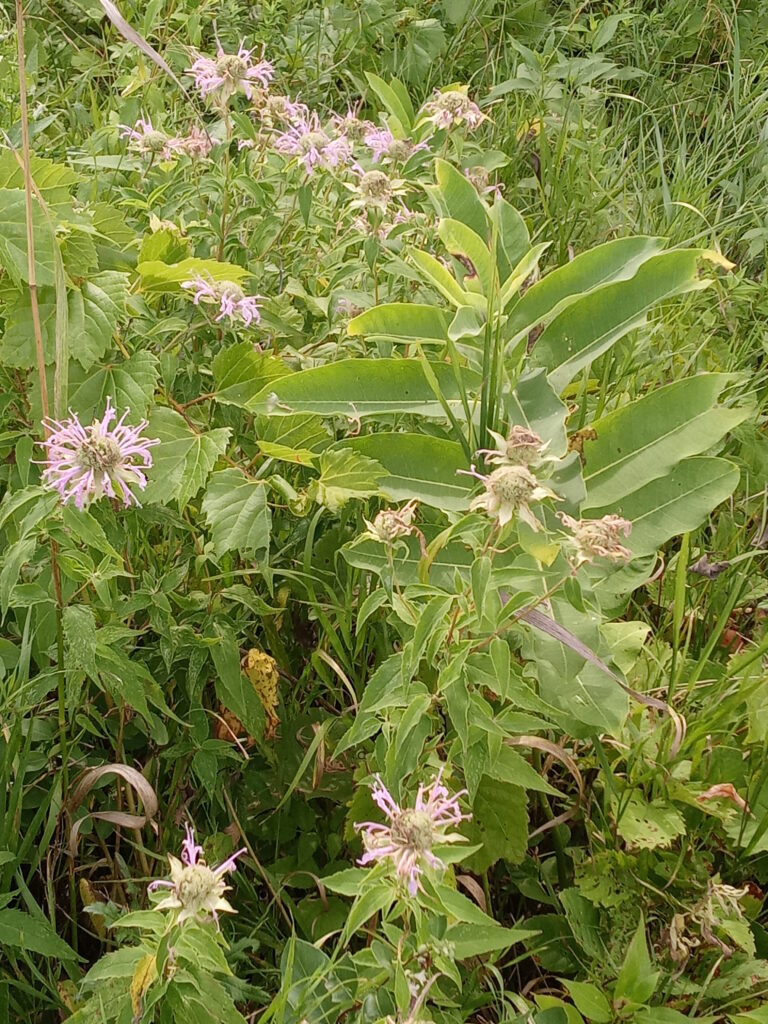5 Must Have Plants for Your Homegrown National Park
I am reading Nature’s Best Hope: A New Approach to Conservation that Starts in Your Yard. If you are like me perhaps you have been overwhelmed by the state of the world. From the political divisiveness to the climate crises it can feel completely belittling. Afterall what can I really do?
This is the question that Douglas Tallamy offers in his book. He proposes that property owners around the country create “The Homegrown National Park”–that is return 1/2 of their lawns to native species and avoid ornamentals that do not support the local ecosystem.
His criteria of whether or not the introduced species supports the local ecosystem is whether or not native insects can utilize them for food. Insects, as Tallamy, says supports the whole food web. When we lose insects, we lose the ability to support birds, who require insects to brood their young, we lose the larger animals that depend on birds and on up. Keep reading to be introduced to 5 must have plants for wildlife gardens.
Milkweed

A lot of people know that native bees (European honeybees were introduced to North America and are also struggling) are in trouble but did you know that Monarchs are seriously in trouble as well? So, what is the plant that Monarchs depend on? Turns out it is milkweed.
Tallamy shares the story of a friend’s father, who planted just a few milkweeds. When the monarchs started coming to his garden he joyfully planted more and more for “his monarchs.”
Goldenrod

I was already a HUGE fan of goldenrod. But I didn’t realize that this plant alone supports literally hundreds of native insects. Growing just a small patch of it can really boost your contribution to conservation.
If you need to learn more about how incredible this plant is read this blog post. When you plan your garden next year why not allow a bit of goldenrod? It is important to leave it standing over the winter as some caterpillars overwinter in the stalks.
Oak
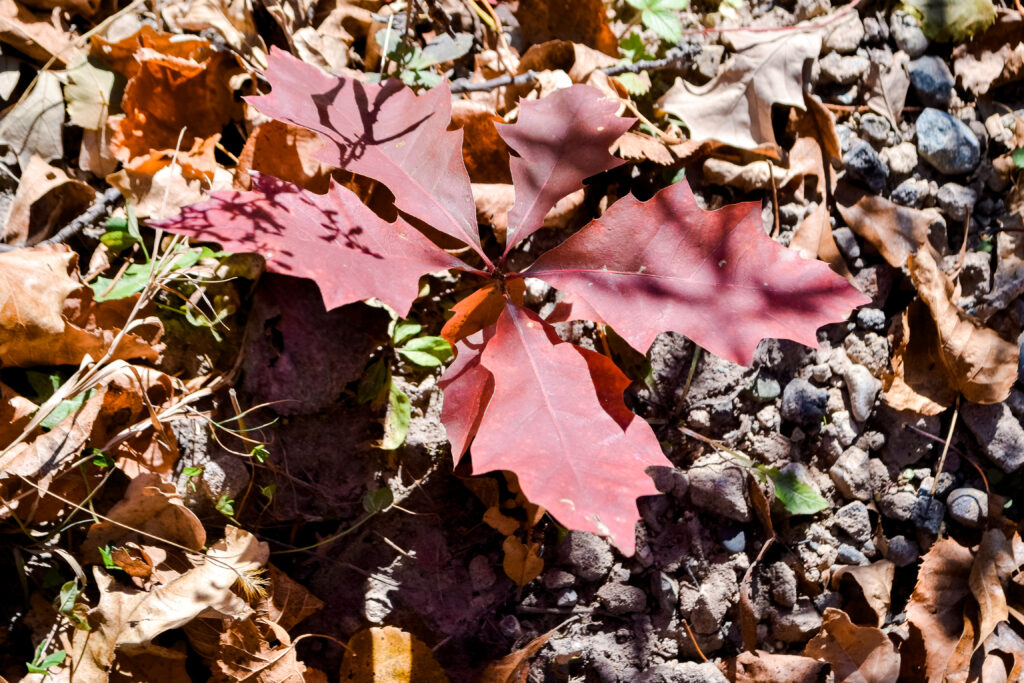
When we were living on the eastside of St. Paul, MN we had a 40X80 FOOT lot. There was a large elm tree in the boulevard area between the sidewalk and the road. The city maintained it, mostly. Other than that, we had very minimal plants, let alone trees. However, our neighbor to the right of us had several mature trees in their backyard, showing that even small plots can support large trees. And oaks are some of the largest.
On our farm we have many white and burr oaks. Not only are these trees high quality wood (even from falling branches), but they support more wildlife than I can even guess. Varieties of oak are native in many ecosystems, Tallamy says, “white oaks and their relatives are the very best trees you can plant in your yard for wildlife in 84 percent of U.S. counties.” in the mid-Atlantic region of the U.S. Oak support 557 species of caterpillar. Worldwide that number is 934 (Tallamy, p 143-144).
Oaks can be daunting to plant. They grow slow and chances are if you are the one planting them you will not see them in their glory. However, even young trees contribute to the food web.
Willow
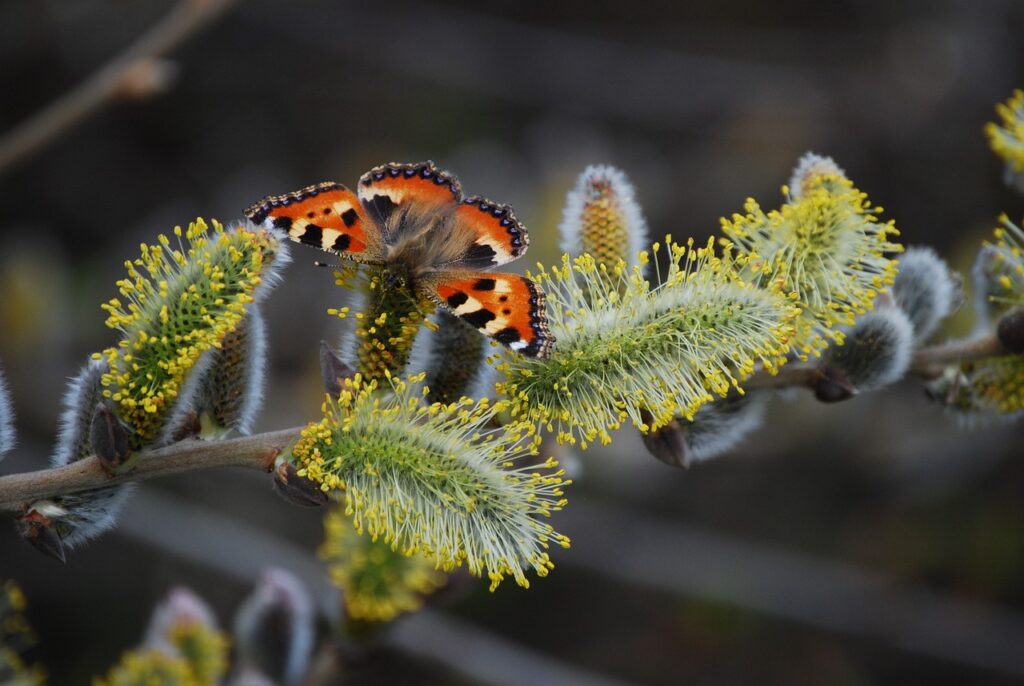
Few trees have as mystical of connotations as willow. Most of us think of “Weeping Willows.” However did you know that there are other, smaller shrub type willows that are easier to plant in a limited space (pussy willow is one). There are actually over 400 varieties of willow around the world. They range from creeping ground cover to shrubs, dwarf trees and the large weeping willow. Salix is the Latin family name. Willows are one of the “keystone genera” that Tallamy recommends planting.
If you are interested in planting willow, check out the National Wildlife Federation’s Native Plant Finder website for one that is native to your area. This is as AWESOME resource. I went to the website and entered my zip code. Then I looked up Willow trees. There are at least 12 varieties native to my area (including pussy willow). It goes on to say that the willows in my area support 355 types of caterpillar. You can do a search to see some of the butterflies and caterpillars you will be attracting to your yard with this one plant.
Elder(berry)
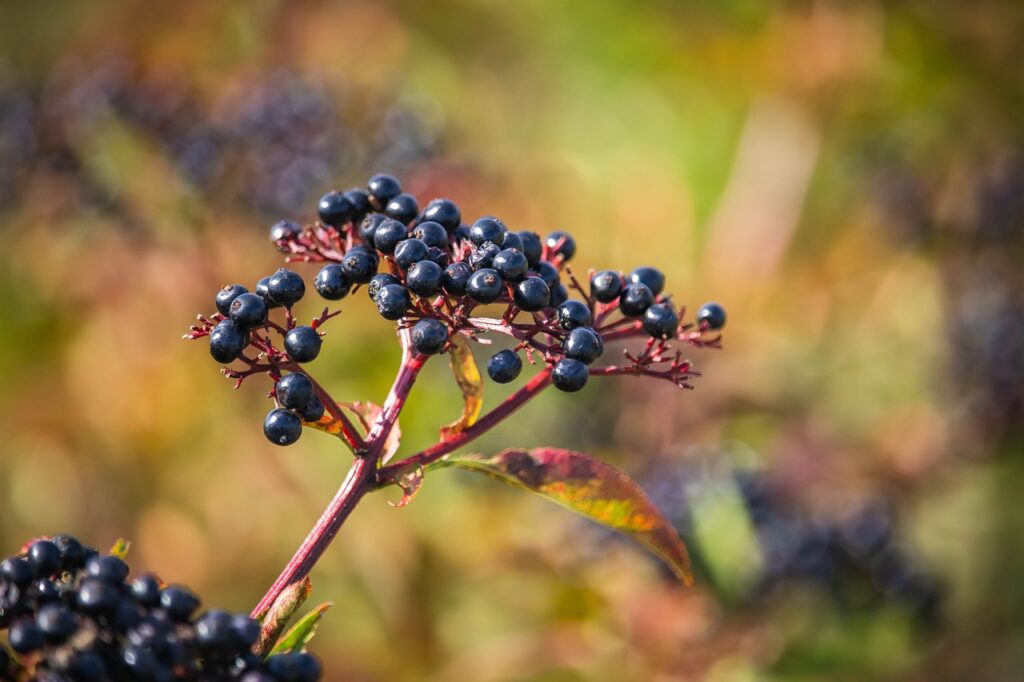
I have already written extensively about my love for elderberry. Elderberry syrup is my favorite herbal preparation to boost immune function during winter months. It also helps with psychological immunity (read more HERE).
So, I knew how awesome the Elder plant was for people, but I didn’t know that it is absolutely awesome for native insects. It turns out the stalks of the bush can easily be hollowed out by caterpillars looking for a place to overwinter. You can also create your own bee hotel by hollowing out the branches and bundling them together.
Note: that Tallamy recommends having several smaller hotels then one big one. If a bee predator were to find your one hotel your backyard population could be wiped out completely.
Just another reason to love Elder.
The Elephant in the Room
Let’s talk about the elephant in the room–insects–Do I really want them? Honestly, we have had springs where I didn’t let the kids play outside because the mosquitoes were so bad, so yeah, they can be a bit of a bother. And then there is Lyme, right? Tallamy posits that the reason Lyme exploded in the 60s and 70s was because the white tail deer population also exploded to beyond “carrying capacity” making an unhealthy and unbalanced ecosystem.
Unbalanced ecosystems wreak havoc wherever they are. The first year we grew organically on our land the grasshoppers were HORRIBLE. But now the birds and predatory insects have come back as well. So, I can say from experience the transition to a more balanced system doesn’t happen right away and it is difficult at the beginning, but it does balance, and the balance is beautiful.
Note: Tallamy has a mosquito fix. Fill a 5 gallon bucket 1/2 way with water. But a bit of hay or cut grass in it. This will attract all the female mosquitoes. After 3 or 4 days you will have a bucket full of mosquito eggs. Then just drop in a mosquito bomb tablet. This will kill the eggs. Spraying adult mosquitoes doesn’t kill eggs, and it kills all the other insects.
As you plan gardens for next year consider including some of these native plants in your garden.
